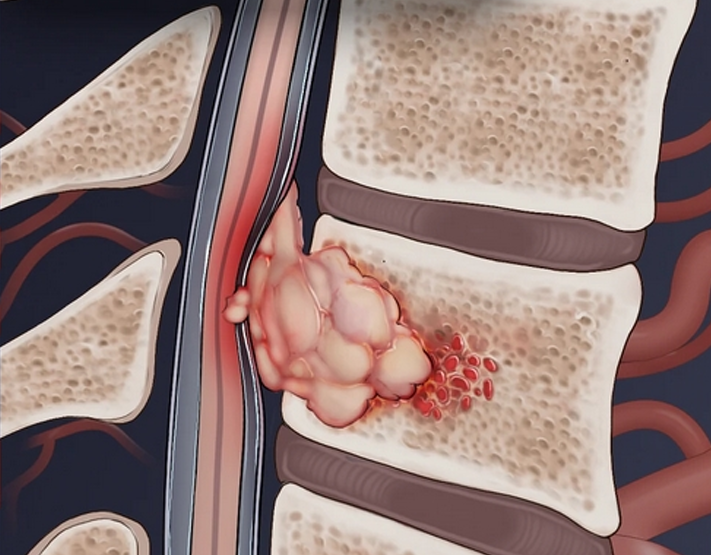Spinal tumours
Service > Spinal tumours

Spinal tumours
A spinal tumor is a growth that develops within your spinal canal or within the bones of your spine. A spinal cord tumor, also called an intradural tumor, is a spinal tumor that that begins within the spinal cord or the covering of the spinal cord (dura). A tumor that affects the bones of the spine (vertebrae) is called a vertebral tumor.
Spinal tumors or growths of any kind can lead to pain, neurological problems and sometimes paralysis. A spinal tumor can be life-threatening and cause permanent disability. Treatment for a spinal tumor may include surgery, radiation therapy, chemotherapy or other medications.
🔷 Spinal Tumors – Background
Spinal tumors are abnormal growths that develop within or near the spinal cord or vertebrae. These tumors can be benign (non-cancerous) or malignant (cancerous), and they may originate in the spine (primary tumors) or spread from other parts of the body (secondary or metastatic tumors). Depending on their location and size, spinal tumors can cause pain, neurological symptoms, and structural instability.
📌 Types of Spinal Tumors:
Intramedullary tumors: Located inside the spinal cord (e.g., astrocytomas, ependymomas)
Extramedullary tumors: Found in the spinal canal but outside the cord (e.g., meningiomas, schwannomas)
Vertebral tumors: Affect the bones of the spine (e.g., metastatic cancers, multiple myeloma)
📌 Common Symptoms:
Persistent back or neck pain, often worsening at night
Radiating pain to arms or legs
Numbness, tingling, or weakness in limbs
Difficulty walking or maintaining balance
Loss of bowel or bladder control (in severe cases)
Paralysis (if the spinal cord is compressed)
📌 Why Early Treatment Is Essential:
Early detection is crucial to prevent permanent neurological damage and to increase the chances of effective treatment. Depending on the type and location of the tumor, timely intervention can relieve symptoms, preserve function, and improve outcomes.
📌 Available Services May Include:
Neurological and spinal evaluations by specialists
Advanced imaging (MRI, CT scan, PET scan) for accurate diagnosis
Biopsy to determine tumor type (if necessary)
Multidisciplinary treatment planning (neurosurgery, oncology, radiology)
Non-surgical management (e.g., radiation therapy, chemotherapy)
Surgical removal or decompression of tumors
Post-treatment rehabilitation and long-term follow-up

